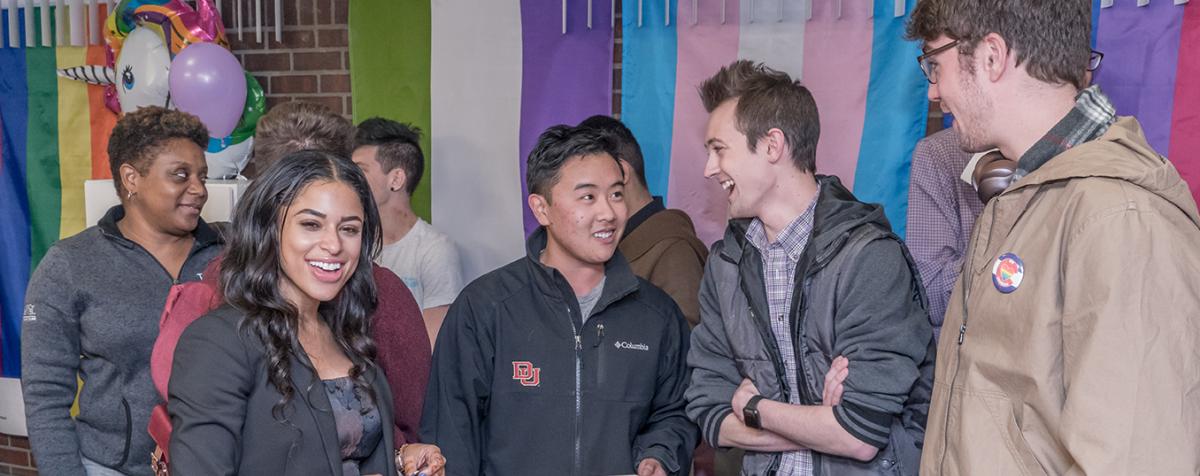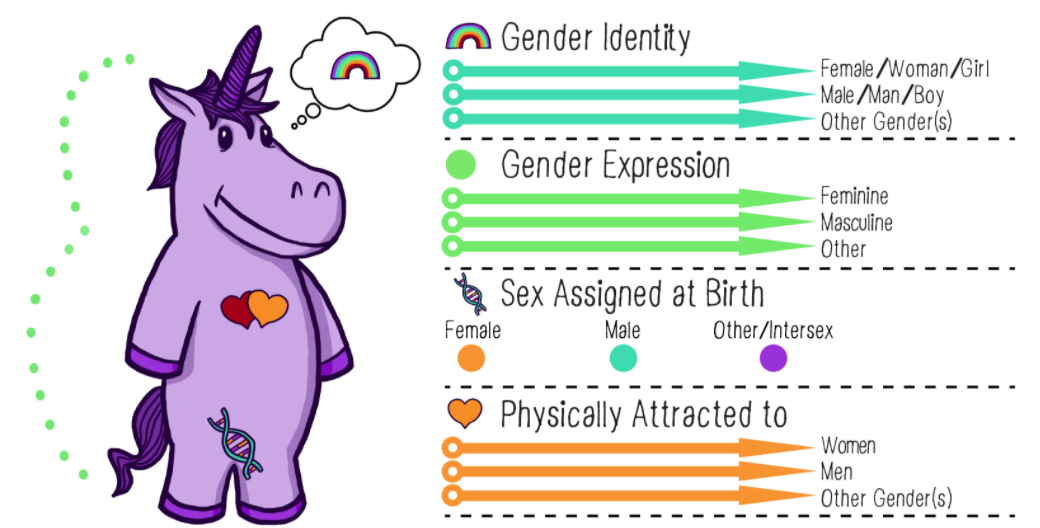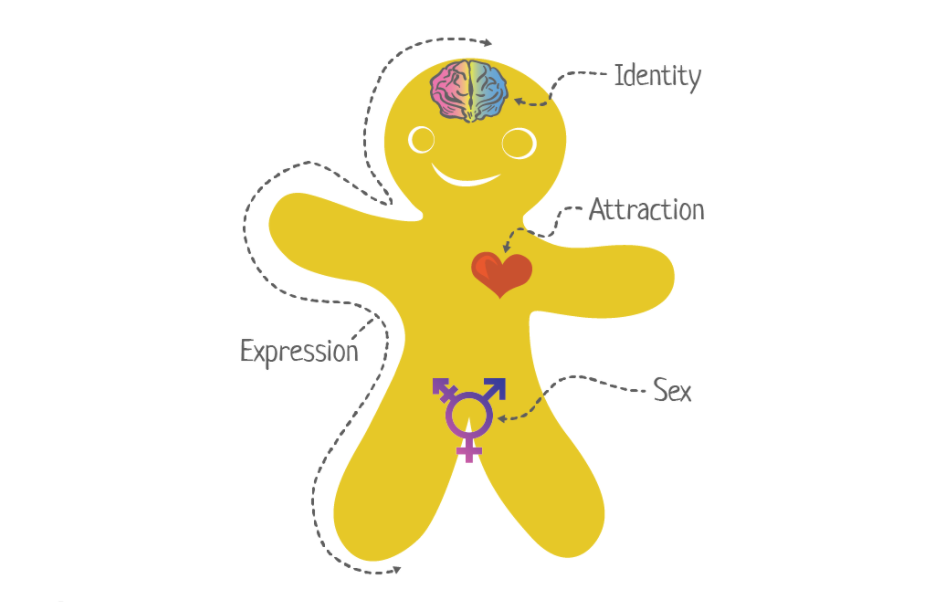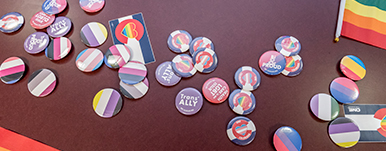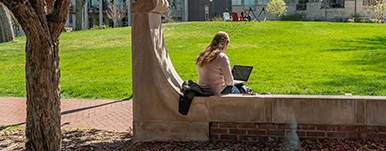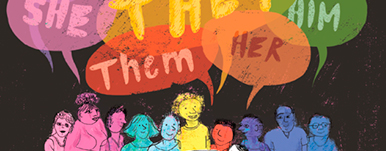Sexual Orientation and Gender Identity*
Introduction
This Sexual Orientation and Gender Identity module offers a glossary, models, and campus resources on Title IX to increase our awareness on this topic and best support our students. Gender identity and expression are complex concepts that have come to the forefront of national conversations around diversity and inclusion in Higher Education.
Students from all over the country have voiced their concern and fear of being misgendered, outed without consent and subsequently invalidated, marginalized, and psychologically damaged by a lack of awareness surrounding their identity. With this in mind, we invite you to explore the resources on this page as a primer to the many layers that surround these concepts and incorporate many of the suggested approaches into your teaching practices.
This article covers:
- Introduction
- Teaching Tools
- Supportive Resources

Gender
The behavioral, cultural, or psychological traits typically associated with one sex.

Agender
Agender literally means “without gender” and is a term used to refer to individuals who consider themselves gender neutral or who don’t express a gender identity.
(adapted from Trans Student Educational Resources)

Androgynous
A gender expression that ambiguously incorporates masculine and feminine characteristics.
(adapted from Human Rights Campaign)

Cisgender/Cis
Derived from the Latin word meaning "on the same side". People whose gender identity or expression aligns with the sex assigned to them at birth. "Cis" is not a slur nor a fake word.
(adapted from Trans Student Educational Resources)

Deadname
The birth name of a person who has since changed their name (especially a transgender person).
(adapted from Inside Higher Ed)

Deadnaming
When someone refers to a person who is transgender by their non-affirmed name. Deadnaming is damaging to the individual, and conveys disrespect for the person's identity, a lack of societal support, invalidation and can potentially "out" the person and signal to others that they are transgender without their consent.
(adapted from Inside Higher Ed)

Gender Binary
The idea that male/female are the only two genders, and that individuals should be gendered either as man or woman.
(adapted from Trans Student Educational Resources)

Gender Expression
The external appearance of one's gender identity, usually expressed through behavior, clothing, haircut or voice. Gender expression may or may not conform to socially defined behaviors and characteristics typically associated with being masculine or feminine.
(adapted from Trans Student Educational Resources Gender Unicorn)

Gender Fluid
Refers to individuals whose gender identity fluctuates between all genders or a specific subset of genders.
(adapted from Human Rights Campaign)

Gender Identity
A person's innermost concept of self as male, female, a blend of both or neither. It is how individuals perceive themselves and what they call themselves or ask to be called. It's important to remember that one's gender identity can be the same or different from the sex assigned at birth.
(adapted from Trans Student Educational Resources)

Gender Nonconforming
An umbrella term often used to describe people who do not follow stereotypical societal expectations about how they should look, or act based on the sex they were assigned at birth.
(adapted from A Queer Endeavor)

Genderqueer
An umbrella term used to refer to a broad spectrum of non-binary gender identities.
(adapted from Human Rights Campaign)

Gender Transition
The process by which some people strive to more closely align their internal knowledge of gender with its outward appearance. Some people socially transition, whereby they might begin dressing, using names and pronouns and/or be socially recognized as another gender. Others undergo physical transitions in which they modify their bodies.
(adapted from Trans Student Educational Resources)

Gender Variant
A term used to refer to individuals who don’t conform to socially-constructed, dominant gender norms.
(adapted from PFLAG)

Intersex
Individuals born with any several variations in sex characteristics that can include chromosomes, gonads, sex hormones, or genitals.
(adapted from Human Rights Campaign)

Misgendering
The act of not acknowledging and/or using a person’s preferred and/or requested gender pronouns. It also occurs when referring to someone through gendered language with which they do not identify, i.e., “guys,” “ma’am,” “miss,” “sir,” etc. Misgendering is disrespectful, psychologically damaging and causes a great deal of anxiety for people who are subsequently put at an increased risk of discrimination.
(adapted from PFLAG)

Non-Binary
An umbrella term for all genders other than female/male or woman/man; used as an adjective (e.g. Alex is a nonbinary person). Not all non-binary people identify as trans and not all trans people identify as nonbinary.
(adapted from Human Rights Campaign)

Transgender/Trans
An umbrella term often used to describe people whose gender identity and/or expression is different from cultural expectations based on the sex they were assigned at birth. Being transgender does now imply any specific sexual orientation.
(adapted from Trans Student Educational Resources)

Trans Woman
Generally describes someone assigned male at birth who identifies as a woman. Sometimes trans women identify as male-to-female (also MTF, M2F, or trans feminine).
(adapted from GLAAD Media Reference Guide)

Trans Man
Generally describes someone assigned female at birth who identifies as a man. Sometimes trans men identify as female-to-male (also FTM, F2M, or trans masculine).
(adapted from GLAAD Media Reference Guide)

Two-Spirit
A term traditionally used by Native American people to refer to individuals who exhibit the identity and roles commonly associated with the opposite sex.
(adapted from We R Native)
Making Mistakes
![]()
Personal Responsibility
If you make a mistake about someone’s pronoun, correct yourself.
"[...] going on as if it did not happen is actually less respectful than making the correction. This also saves the person who was misidentified from having to correct an incorrect pronouns assumption that has now been planted in the minds of any other participants in the conversation who heard the mistake"
– Spade, 2010
![]()
Community Responsibility
When someone else makes a pronoun mistake, correct them.
"[...] It is polite to provide correction, whether or not the person whose pronoun was misused is present, in order to avoid future mistakes and in order to correct the mistaken assumption that might now have been planted in the minds of any other participants in the conversation who heard the mistake"
– Spade, 2010
Title IX Considerations
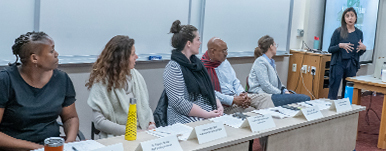
Title IX and Equal Opportunity (EO)
The University of Denver’s Equal Opportunity policy and procedures expressly prohibit harassment, discrimination or violence against any person on the basis of sex, sexual orientation, gender identity or gender expression. DU will continue to follow this policy adopted in 2007. This will not change.
Additionally, DU is governed by the Colorado Anti-Discrimination Act’s prohibition against harassment and discrimination on the basis of sex, which includes sexual orientation and gender identity. The University will continue to stand firm in its commitment to honoring the identities of all people and will adhere to its established Equal Opportunity policy and procedures.

Title IX Protected Class
In United States federal anti-discrimination law, a protected class is a group of people with a common characteristic who are legally protected from discrimination on the basis of that characteristic. Protected classes include race, color, religion, national origin, age (40 and over), sex, pregnancy, citizenship, familial status, disability, veteran status and genetic information.
Videos
Name and Pronoun Articles

Pronoun Etiquette Sheet
Tips on how to be polite when it comes to problems of misidentifying another person’s pronoun.
Download PDF
Suggested Format for Requesting Student Self-Identification
These practices are what institutions should strive for in addressing the needs of transgender students.
Read Article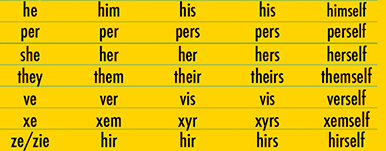
FAQs about Pronouns
Here are answers to questions about common pronouns, what to do when you make a mistake, and more.
Visit umw.edu
Pronoun Introductions
Designed for the School of Social Work at Smith College, this resource is broadly useful for many disciplines.
Download PDFSupporting Trans Students

Exploring the Ways Trans* Collegians Navigate Academic, Romantic, and Social Relationships
Inclusive Learning Environments for LGBTQI Students

